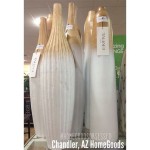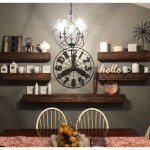German Style Home Decor Ideas
German home decor emphasizes practicality, functionality, and a sense of order. Clean lines, simple aesthetics, and high-quality materials are central to this design philosophy. While regional variations exist, several key elements define the quintessential German interior design style.
Emphasis on Natural Materials: Wood plays a significant role in German homes, often appearing in flooring, furniture, and cabinetry. Oak, beech, and pine are popular choices, valued for their durability and warm tones. Natural stone, such as slate and granite, is frequently used for countertops and flooring in kitchens and bathrooms, contributing to the overall sense of solidity and quality.
Minimalist Aesthetics: Clutter is avoided in German design. Spaces are kept clean and uncluttered, with a focus on essential furnishings and decorative items. This minimalist approach contributes to a sense of calm and order, reflecting a cultural preference for efficiency and practicality.
Neutral Color Palettes: German interiors often feature neutral color schemes, with whites, grays, beiges, and soft blues creating a serene backdrop. These neutral tones allow the natural beauty of wood and stone elements to stand out and provide a versatile base for incorporating accent colors through textiles and artwork. Occasionally, bolder colors like deep greens or reds are used sparingly to add visual interest.
High-Quality Craftsmanship: Durability and longevity are highly valued in German culture. This translates to a preference for well-made furniture and décor crafted from high-quality materials. Investment in durable pieces contributes to sustainability and reduces the need for frequent replacements.
Functional Furniture: Furniture in German homes is chosen for its practicality and functionality. Pieces are often multi-purpose and designed to maximize space utilization. Storage solutions are integrated seamlessly into the design, keeping belongings organized and out of sight.
Gemütlichkeit: While functionality is paramount, creating a sense of coziness and comfort, known as "Gemütlichkeit," is also important. This is achieved through the incorporation of soft textiles, such as wool throws and plush cushions, warm lighting, and personal touches that make a house feel like a home.
Traditional Accents: While modern German interiors often lean towards minimalism, traditional elements can be incorporated to add character and warmth. These might include cuckoo clocks, beer steins, or hand-painted ceramics. These accents are typically used sparingly to avoid overwhelming the minimalist aesthetic.
Focus on Lighting: Natural light is maximized through the use of large windows and strategically placed mirrors. Artificial lighting is carefully planned to create a warm and inviting atmosphere. Layered lighting, incorporating ambient, task, and accent lighting, is commonly used to achieve the desired effect.
Order and Organization: A sense of order and organization is fundamental to German design. Everything has its place, and clutter is kept to a minimum. This contributes to a calming and relaxing environment.
Incorporating Plants: Bringing the outdoors in is another common element in German homes. Houseplants are used to add life and vibrancy to the interior, contributing to a healthier and more pleasant living space.
Simple Window Treatments: Window treatments in German homes are typically simple and functional. Sheer curtains or blinds are often used to allow natural light to filter through while maintaining privacy. Heavy drapes are less common, allowing the clean lines of the windows and the architectural features of the room to remain visible.
Bauhaus Influence: The Bauhaus movement, originating in Germany, has had a lasting impact on German design. Its emphasis on functionality, simplicity, and geometric forms is often reflected in contemporary German interiors.
Regional Variations: While these elements represent the core of German home decor, regional variations exist. For example, Bavarian homes often feature more rustic elements, while homes in urban areas may lean towards a more modern and minimalist aesthetic.
Adapting German Style: Incorporating German style into one's home doesn't require a complete overhaul. Introducing elements such as natural materials, neutral color palettes, and functional furniture can create a similar aesthetic. Focusing on decluttering, organization, and high-quality craftsmanship can also evoke the essence of German design principles.
Sustainability Considerations: German design often incorporates sustainable practices. This includes using locally sourced materials, choosing energy-efficient appliances, and investing in durable furniture that will last for years.
By understanding the core principles of German design, individuals can create a space that reflects the style's emphasis on functionality, simplicity, and quality craftsmanship.

5 German Interior Designers You Need To Know For Top Home Decor Ideas

The Local Flea

The Local Flea

61 Best Traditional German Houses Ideas House Styles

The Local Flea

5 German Interior Designers You Need To Know For Top Home Decor Ideas

61 Best Traditional German Houses Ideas House Styles

These German Rising Trends Will Help Design Transform Their Hom

The Local Flea

6 Reasons Why The German Modern Houses Design Works







